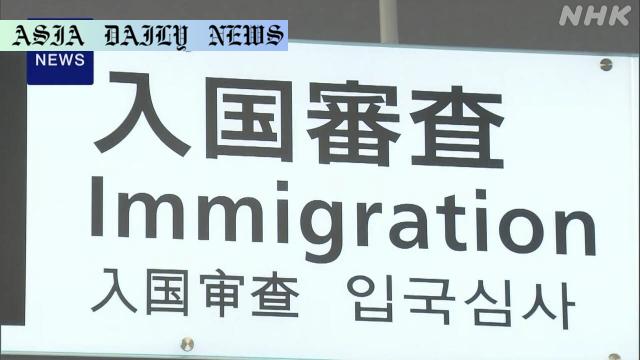Immigration: Japan to accelerate launch of electronic system for visa-exempt foreigners by fiscal year 2028.

Introduction to Japan’s New Immigration Authentication System
Japan is taking significant steps to modernize its immigration processes by introducing an electronic authentication system. Inspired by the United States’ ESTA system, this initiative primarily targets foreigners entering the country under visa waiver programs. The move reflects Japan’s proactive approach to addressing concerns over overstays, illegal employment, and national security risks. Initially planned for introduction by 2030, the Japanese government has now accelerated the timeline to roll out the system by the fiscal year beginning in April 2028.
How the System Will Work
The new system, designed for visitors from approximately 70 countries and regions exempted from visa requirements, provides a seamless process for online immigration checks. Visitors will be required to complete pre-travel authorizations, which involve submitting relevant personal and travel-related information. This information will be cross-verified with Japan’s immigration database to ensure compliance and assess any potential risks.
Reasons Behind the Acceleration
The sudden increase in foreign visitors to Japan post-pandemic has emphasized the need for a robust and streamlined immigration system. Justice Minister Suzuki Keisuke cited recent instances of individuals from visa-waived countries overstaying or engaging in illegal work as key factors driving the decision. Additionally, the system aims to strengthen anti-terrorism measures, ensuring that Japan remains a secure and welcoming destination for legitimate travelers.
A Broader Perspective on Immigration Reforms
Beyond addressing the immediate challenges of overstays and illegal employment, the electronic authentication system symbolizes a larger paradigm shift in Japan’s approach to immigration. Japan has traditionally been perceived as having stringent and conservative immigration policies. However, this digital overhaul demonstrates its commitment to maintaining security while embracing technological advancements and fostering international tourism.
Anticipated Impact and Future Outlook
Once implemented, this system is expected to streamline immigration procedures, reduce administrative burdens, and increase operational efficiency. Additionally, it will serve as a deterrent for those intending to misuse Japan’s visa waiver allowances while fostering a more transparent, accountable screening process. As Japan prepares for the World Expo 2025 in Osaka and other international events, timely implementation of enhanced immigration measures will be integral to its global image. This ambitious initiative underscores Japan’s adaptability in addressing contemporary challenges, setting a benchmark for other nations to consider.
Commentary
Japan’s Proactive Approach to Modern Immigration Challenges
Japan’s decision to expedite the launch of its new electronic immigration authentication system is a testament to its adaptability in an increasingly globalized world. One of the key challenges for any country that boasts a tourist-friendly image is striking the right balance between openness and security. By adopting a system inspired by the United States’ ESTA, Japan is demonstrating its willingness to modernize and align its policies with global best practices. This move not only improves operational efficiency but also sends a strong message about the country’s commitment to maintaining its reputation as a secure and hospitable destination.
Addressing Visa Violations and Illegal Employment
Overstays and illegal employment have long been issues for nations hosting large numbers of foreign visitors. The introduction of a digital, pre-travel authorization system shows Japan’s intent to tackle these challenges head-on. By doing so, it is adding a layer of accountability for visa-exempt travelers. On the surface, this system might seem like a bureaucratic hurdle for tourists, but it ultimately benefits all stakeholders by cultivating a sense of fairness and safety.
The Role of Technology in Modern Immigration Systems
Technology’s integration into immigration processes is not just about convenience; it also enhances the capability to preemptively identify security risks. By requiring information submission ahead of travel, Japan gains a critical window to assess risks and take appropriate actions. This not only fortifies its national security but also aligns with global trends in leveraging technology for governance.
Conclusion: A Step Toward Progressive Reform
In conclusion, Japan’s initiative to implement a modern electronic immigration system marks a pivotal moment in its approach to international travel and security. While challenges are inevitable in the transition phase, the long-term benefits of improved security, streamlined processes, and international goodwill far outweigh the initial hurdles. With the timeline now being accelerated to 2028, Japan is setting an admirable example of progressive reform, blending tradition with innovation. It will be intriguing to watch how this system unfolds and potentially serves as a model for other countries looking to upgrade their immigration frameworks.


